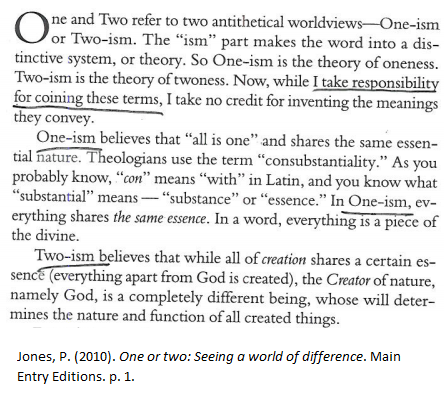Yesterday, I highlighted the work of the American Copy Editors Society against plagiarism. I learned about their work from Neil Holdway, treasurer of ACES and editor of Chicago area paper Daily Herald (incidentally, where Janet Mefferd once worked. Holdway was her boss there). I asked Holdway about the Mark Driscoll controversy and specifically about the initial allegations of his old colleague regarding Mark Driscoll’s use of Peter Jones’ work. In his response, Holdway took issue with the results of Tyndale House’s investigation, saying
I disagree with Tyndale’s assertion that Peter Jones was adequately cited in the 14 pages called into in question in “A Call To Resurgence.” As written in our task force’s e-book on fighting plagiarism in journalism, “Telling the Truth and Nothing But“:
“We broadened our definition of plagiarism to cover the realm of ideas, encouraging practitioners throughout the industry to more generously and forthrightly cite the seminal, distinctive work of others from whom they draw inspiration in creating their own original works.”
Specifically, Holdway disagrees with the following claim in the Tyndale statement:
Pertaining to his Tyndale book, A Call to Resurgence, Tyndale believes that Mark Driscoll did indeed adequately cite the work of Peter Jones.
On page 320 of A Call To Resurgence, Driscoll includes this footnote:
See, for example, truthexchange.com or Peter Jones, One or Two: Seeing a World of Difference (Escondido, CA: Main Entry Editions, 2010).
According to Holdway, this one citation wasn’t adequate to give credit for the 14 pages of material which relied heavily on Jones’ writing and ideas.
Holdway also addressed Tyndale’s findings regarding Driscoll’s intent by citing the following passage in the ACES ebook:
“An unavoidable complication in any discussion of plagiarism is intent. Was the plagiarism deliberate? Was it inadvertent? Any effort to define journalistic standards must, in our view, consider the recipients of the journalism, not just the producers. Plagiarism harms the creator of the original material, our craft, our industry — but just as crucially, it is a violation of the audience’s trust. Whatever the motivation, the outcome is the same: Everyone suffers.”
Holdway added:
The controversy could have been avoided so easily with more, well-placed, what I would consider proper attribution — saying the outline was “inspired by Peter Jones” or “presented by Peter Jones,” for example, or of course in a footnote as he had done elsewhere. Again, as the e-book on plagiarism says:
“Journalists might understandably start the conversation with a question: How much information — a word, a phrase, a sentence — can be copied without committing plagiarism? That’s the wrong approach. It is more productive to look for reasons to attribute information more often, more clearly, more generously.”
In my opinion, Tyndale’s statement is inadequate in at least three other ways.
The extent of the problem was not addressed adequately by Tyndale or Mark Driscoll. Neither Driscoll nor Tyndale addressed the many other instances of plagiarism and recycling which have come to light. The closest the statement came to such an acknowledgment was a vague reference to a review of other books.
Driscoll did not take direct responsibility for his books (“mistakes were made” – see also). According to the statement still up on the Mars Hill website (click Downloads), responsibility for the “citation errors” in the book on the Apostle Peter was assigned to a research assistant and a team of people. However, Driscoll’s name is on the label as the author. Furthermore the Tyndale statement refers to a review of Driscoll’s books that involve others:
We are also making changes to our content development process to avoid these mistakes in the future. In addition, we are working with all of our past publishers to review other books we have published. If other mistakes were made, we want to correct them as soon as possible.
What is a “content development process?” Is that the same thing as authoring a book? How many people are involved and what are they doing? If anything, this statement leaves unanswered many questions about ghostwriting and authorship by committee.
In my opinion, Tyndale’s investigation should have involved independent scholars/experts. When Jonah Lehrer was being investigated by Wired magazine, an independent scholar reviewed the allegations as well as other columns written by Lehrer. The independent investigation turned up many instances of plagiarism and recycling of previous material. For understandable reasons, Tyndale House had an interest in cleaning up the situation as soon as possible. They have financial interests in A Call to Resurgence and future books by Driscoll. Even with the best of intentions, these factors make objectivity difficult to achieve.
From a public relations standpoint, Tyndale House’s December statement may have helped quell media interest in the story, it did not adequately address the scope of the matter. It seems to me that there are still important questions to explore.
Next week, I intend to provide additional instances of inadequate citation and recycling without disclosure in the Driscolls’ book Real Marriage.
To see the material in A Call To Resurgence compared to Peter Jones’ work, click here.
For all posts on this topic, click here.
